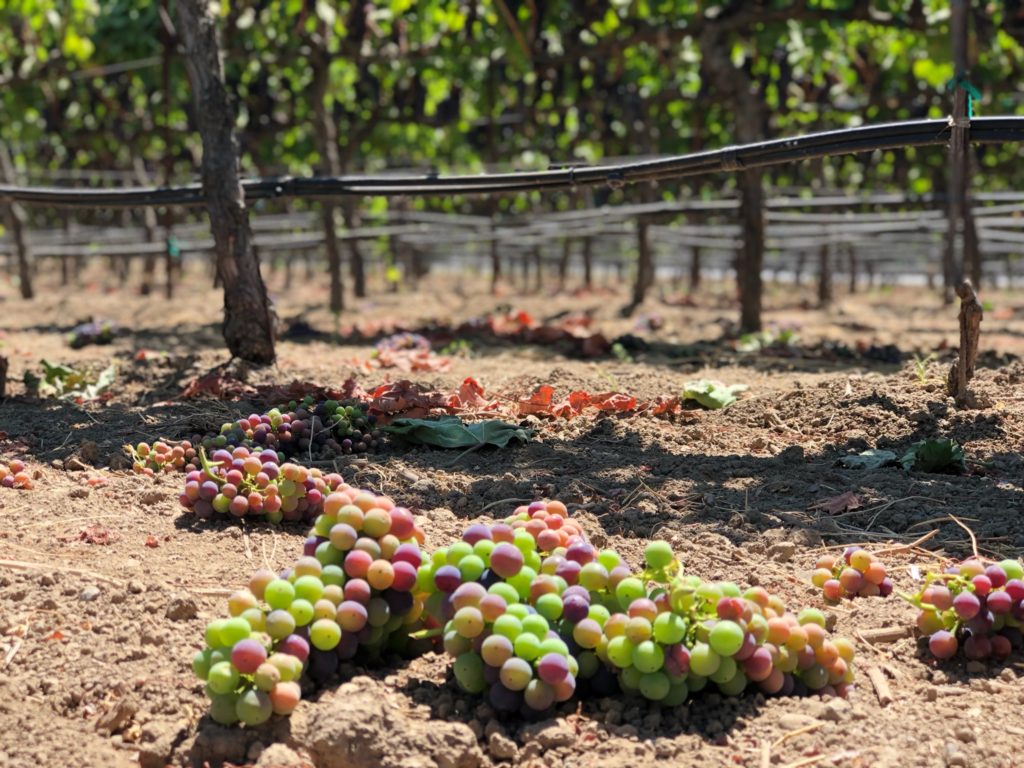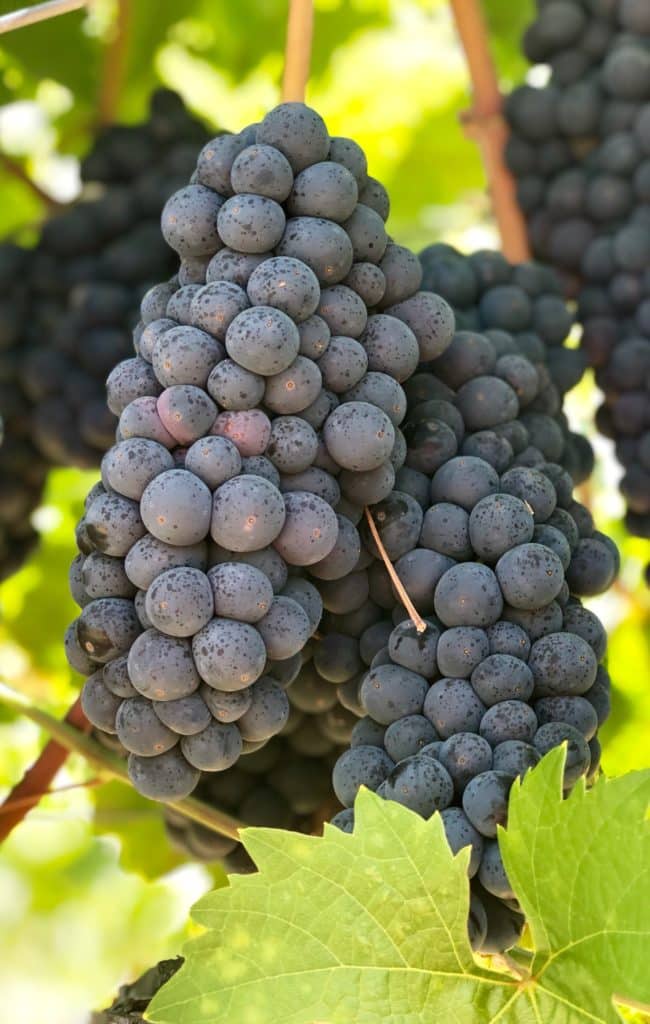Veraison, the French word meaning “moment of truth”, happens when grapes develop from green to gold or blackish purple color. This time during the growing season represents the transition from berry growth to berry ripening. The clusters that mature & are in balance “cross the finish line” and are the winners of the “race” to the sorting table and are vaulted into the tanks for winemaking.

During veraison, Owner and Vineyard Manager, Bob Biale along with Winemaker, Tres Goetting conduct daily checks on the many vineyards we source fruit from along with our estate vineyard. So, what are they checking for? Bob & Tres are checking on veraison progression and evenness of ripening of the grape clusters. These factors will determine when the “green drop” will occur, followed by determining when to harvest. Now you are probably wondering what “green drop” means. Well it is as simple as this; it means dropping any fruit that is not at least 80-90% colored up on the vines as well as removing any “second crop” (volunteer fruit usually higher on the vine shoots). Most green drops remove between 10-25% of the total crop, but in some cases, even more of the crop is removed! Unlike most farming, more is not better. Better is better! Reducing the crop load allows the clusters that remain to receive all the nourishment that had previously been moving into cell division, shoot growth and water accumulation to begin to ripen the fruit. Instead of diffusing these nutrients into many clusters, they become focused into the few clusters that are left, resulting in more flavorful and intense fruit and subsequent wines! Although “Green drop” might seem wasteful to some, it is actually very important. The mature clusters that are left on the vine develop more complex, structural, and aromatic wine. Our goal is to create high quality wine that really showcases the vineyard.

Once “green drop” has happened Bob & Tres along with the winemaking team will start to monitor the sugar levels of these “winning” clusters.
They will sample from each vineyard leading up to harvest (daily) so they can hand pick the clusters at the perfect Brix (degrees sugar). Brix levels are important in all aspects of winemaking, but in the beginning this measurement helps determine the percent alcohol that the finished wine will have.

We aim to pick when flavors are at their peak (usually around 24 degrees Brix) which converts to about 14.4% ABV. We believe balanced wines allow the beauty of the fruit to shine in your glass as a result. Stay tuned for more behind the scenes coverage of harvest at Robert Biale Vineyards!
Written by Maura Postlethwait